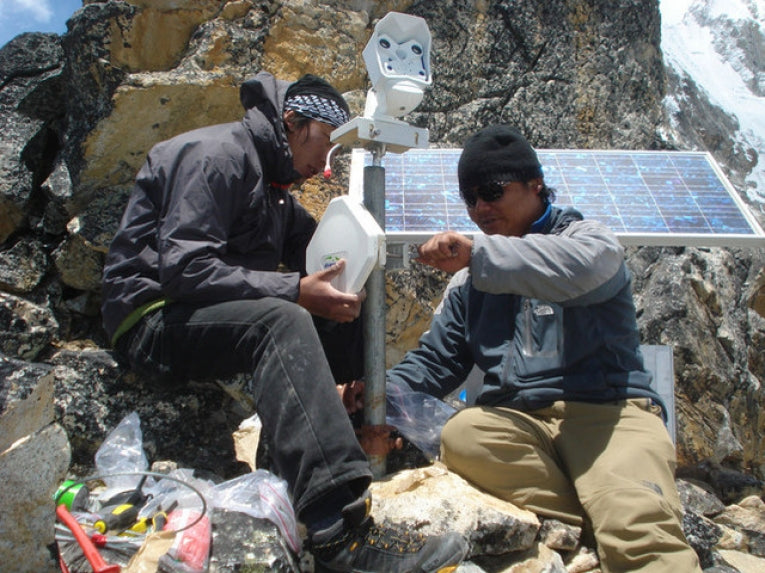The cold bites deeply, and each step requires a monumental combination of endurance, willpower and discipline. The oxygen levels are dangerously low and so you are happy to have your oxygen tank to hand as you climb Kala Patthar. Peering through the misty air you make out something that seems out of place. Perhaps a previous expedition has left some defective equipment behind. As you get closer, the realisation dawns on you. You are approaching something alien to this environment. What is it?
You have come across the webcam installed by the Ev-K2-CNR committee from the city of Bergamo. Installed with a perfect view of its magnificent neighbour Mount Everest, the world's highest peak is now on camera for all to see from 0:15 a.m. to 12:15 p.m. C.E.T. via the world's highest webcam. Powered by solar energy, the camera acts without a physical connection to the co-ordinating laboratory several hundred metres further down the mountain. The imagery it produces during the local hours of daylight is transmitted wirelessly to the Ev-K2-CNR Pyramid Observatory where it is stored and relayed to the partner laboratory in Italy.

Image from the Everest Live Webcam © Comitato Ev-K2-CNR (Everest Share 2011)
For the casual viewer the beautiful scenery might be sufficient to maintain our interest but for a researcher working in the laboratories there are certain details that are very important. The camera provides an unprecedented record of cloud cover and motion, displaying the southwest and north sides of the mountain at 5 minute intervals. This, used in conjunction with data from the weather station located at 8,000 metres on Everest itself, will be used to get a better understanding of climate change.
The technical challenges that the team needed to overcome were not insignificant. Any camera placed at that location would need to function at temperatures as low as -30°C, as well as survive strong winds. They found such a camera and the results are available for all to see.
You can see the camera in action here.










